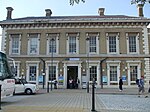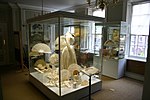GSM London
1973 establishments in EnglandBusiness schools in EnglandCompanies that have entered administration in the United KingdomEducation in the Royal Borough of GreenwichEducational institutions established in 1973 ... and 2 more
Higher education colleges in LondonUse British English from April 2018
GSM London (formerly Greenwich School of Management (GSoM)) was a private provider of higher education based in Greenwich, south-east London, and Greenford, west London. Founded in 1973, it offered business-specific courses at undergraduate and postgraduate levels alongside other specialist training, and catered to a large number of international students. As of 2019, GSM London had educated over 20,000 students. It was owned by the private equity firm Sovereign Capital.On 30 July 2019, GSM London was placed into administration, and ceased all teaching and student support services by the end of November 2019.
Excerpt from the Wikipedia article GSM London (License: CC BY-SA 3.0, Authors).GSM London
Royal Hill, London
Geographical coordinates (GPS) Address Nearby Places Show on map
Geographical coordinates (GPS)
| Latitude | Longitude |
|---|---|
| N 51.4781 ° | E -0.0109 ° |
Address
Royal Hill
SE10 8EX London (Royal Borough of Greenwich)
England, United Kingdom
Open on Google Maps










